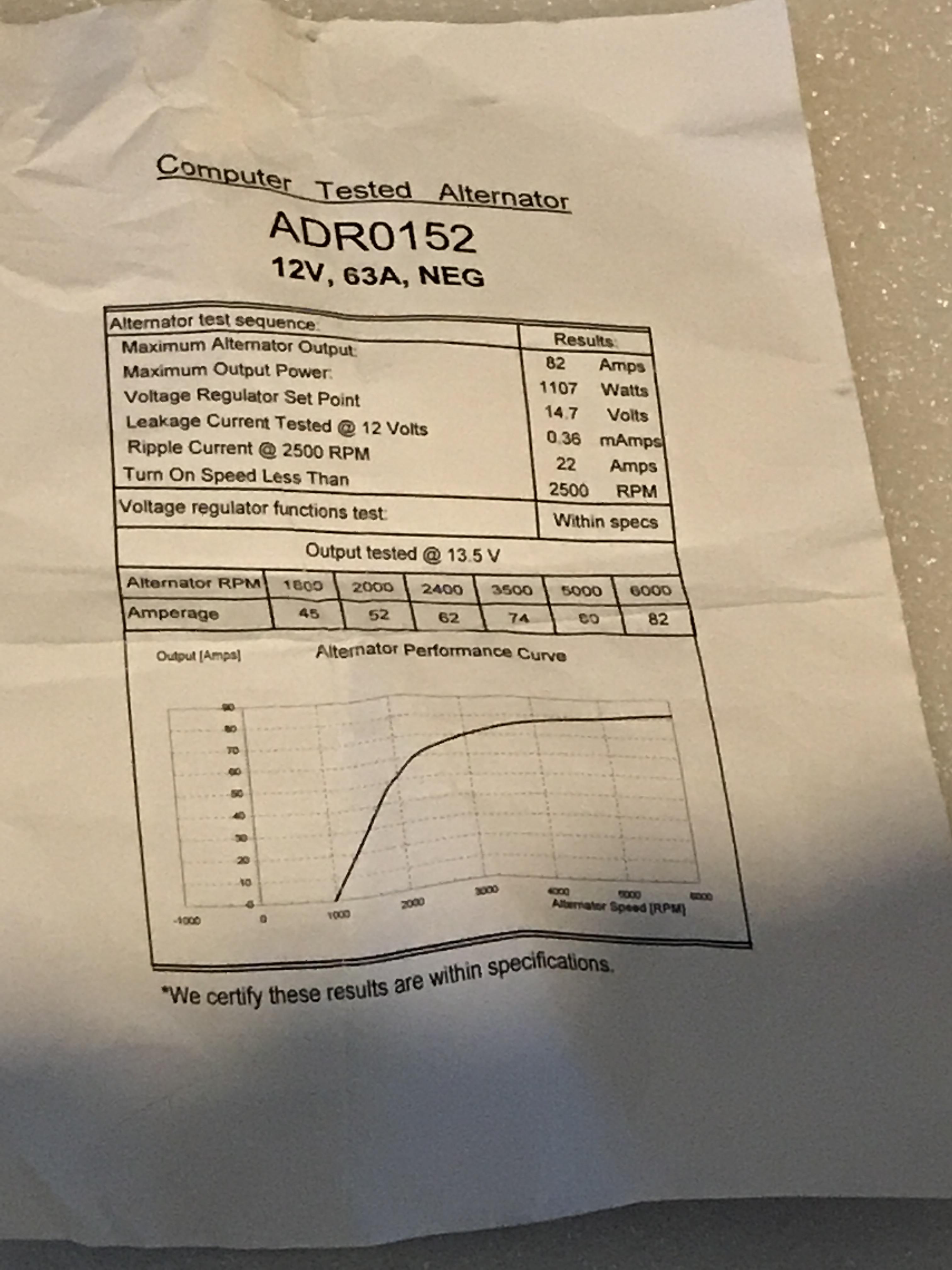What range would you like to cover?
A pro cyclist could manage a best of 5-5.5w/Kg average and more peak; a good, competitive amateur or masters’ racer can put out around 4w/Kg and an untrained person would struggle to produce 2.5w/Kg.
With gravity and weight and up-down pedal thrust can do more with spurts of power.
You will need to characterize or lab test the alternator with a DC motor and switch different load lamps in parallel 35W (headlamps). PWM is used for continuously variable loads. A scope is necessary with current shunts to compute power input and out vs RPM as tungsten lamps rise in R by 800% with temperature thus keeping current more constant as voltage rises.
Surplus or scrap yard automotive parts are cheaper than retail.
It is cheap, but you can only use <10% of the rated load, so it will be an unregulated voltage vs speed output rated by the curve given ~12V/800 RPM as a linear slope (maybe 14V/800RPM) above which the V is regulated to automotive batteries at 14.2V nominal and not 14.7V.
You need to understand that energy conversion from mechanical to electrical has Torque vs RPM profile that varies with electrical load and very few loads are linear like resistors. Torque and current are directly which is a function of RPM. If these are not matched then optimal power cannot be achieved.
Gears are linear, but bulbs, LEDs and fan loads are very nonlinear.
You need to go back to the drawing board and define your project in terms of Energy, Torque, Power, RPM and then choose a load to match your input human power source. and DO NOT START ANY DESIGN UNTIL MEASURABLE SPECS ARE WRITTEN. Lab tests may be necessary to measure DC motor input power , Alt, output power vs load vs RPM. Keep tables, put into spreadsheet and do some math and use a scope if possible.
If it were me, I try to use a car rad. fan as a load and then match impedances and power optimized with PWM load control. This way the more energy generated, the higher the fan speed and thus faster cooling rate for the user.
search for answer or ask if anything is unclear.



